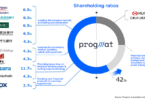Yesterday the European Central Bank published a report on the use of DLT in post-trade processes. It concludes that there’s not yet a clear business case for using DLT / blockchain in post-trade. One of the key contexts is an interest in completing a European capital markets union.
A key part of the report examines regulatory, governance and interoperability considerations. One of the biggest issues it highlights is the potential for fragmentation due to a lack of both standards and interoperability between different security token and post-trade solutions.
There are probably hundreds of DLT solutions looking at tokenized securities, many of which are not purely post-trade but cover the entire life cycle, including issuance, trading and post-trade. However, the emphasis of the ECB paper is on post-trade.
An appendix in the paper explores interoperability solutions, many of which are blockchain interoperability which often requires networks to adopt a particular technology, whether that’s a particular distributed ledger such as Cosmos and Polkadot, or a smart contract language such as DAML.
Two types of DLT solutions are investigated, including native digital assets versus conventional securities migrated to DLT. For the former, the ECB envisions most traditional issuers to use a third-party technology provider for digital asset issuance.
Many digital asset platforms are looking to get cash on ledger to enable atomic settlement and reduce counterparty risk. Recently the Bundesbank did a trial to enable delivery versus payment instead via a link to the payment system.
The ECB states, “The expected gains from tokenising securities and creating “cash on ledger” to settle transactions, compared with settling transactions on existing systems, along with the rationale and business case for such an investment, are still to be explored.”
It says that real-time settlement can be performed by up-to-date legacy systems and reduces but not eliminates credit risk because only pre-funded transactions remove the risk.






